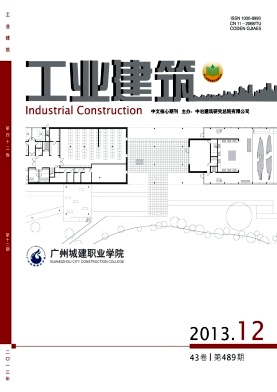|
张可本, 薛绍祖.上海地铁 1 号线地下结构渗漏水现状和治理[J].工业建筑, 1995, 25(9):45-49.
|
|
[2] Mitchell A C,Ferris F G.The Coprecipitation of Sr into CalcitePrecipitates Induced by Bacterial Ureolysis in ArtificialGroundwater: Temperature and Kinetic Dependence [J].Geochimica et Cosmochimica Acta, 2005, 69(17): 4199-4210.
|
|
[3] Fujita Y,Taylor J L.Evaluating the Potential of Native UreolyticMicrobes to Remediate a 90Sr Contaminated Environment[J].Environ.Sci.Technol, 2010, 44:7652-7658.
|
|
[4] De Muynck W,De Belie N,Verstraete W.Microbial CarbonatePrecipitation in Construction Materials: a Review[J].EcologicalEngineering, 2009, 36:118-136.
|
|
[5] Whiffin V S,Van Paassen L A,Harkes M P.Microbial CarbonatePrecipitation as a Soil Improvement Technique[J].Geomicrobiol,2007, 24:417-423.
|
|
[6] DeJong J T,Mortensen B M,Martinez B C,et al.Bio-MediatedSoil Improvement[J].Ecological Engineering,2010,36:197-210.
|
|
[7] Gollapudi U K,Knutson C L,Bang S S, et al.A New Method forControlling Leaching Through Permeable Channels [J].Chemosphere, 1995, 30(4): 695-705.
|
|
[8] Ferris F,Stehmeier L,Kantzas A,et al.Bacteriogenic MineralPlugging[J].Journal of Canadian Petroleum Technology,1996,35(8): 56-61.
|
|
[9] Chu J,Stabnikov V,Ivanov V.Microbially Induced CalciumCarbonate Precipitation on Surface or in the Bulk of Soil [J].Geomicrobiology Journal, 2012, 29(6): 544-549.
|
|
[10] Nemati M, Voordouw G.Modification of Porous MediaPermeability,Using Calcium Carbonate Produced Enzymatically inSitu[J].Enzyme Microb Technol, 2003, 33:635-642.
|
|
[11] Ramakrishnan V,Ramesh K P,Bang S S.Bacterial Concrete[C]//Proceedings of SPIE, 4234, Smart Materials, Melbourne:2001: 168-176.
|
|
[12] Bang S S,Ramakrishnan V.Microbiologically Enhanced CrackRemediation ( MECR) [C]//Proceedings of the InternationalSymposium on Industrial Application of Microbial Genomes.Daegu,Korea: 2001: 3-13.
|
|
[13] Day J L,Ramakrishnan V,Bang S S.Microbiologically InducedSealant for Concrete Crack Remediation [C]//Proceedings of the16th Engineering Mechanics Conference.Seattle, WA: 2003: 1-8.
|
|
[14] Bang S S,Lippertm J J,Yerra U Mulukutla S,et al.MicrobialCalcite,a Bio-Based Smart Nanomaterial in Concrete Remediation[J].International Journal of Smart and Nano Materials.2005,(1): 28-39.
|
|
[15] Ramakrishnan V,Panchalan R K,Bang S S.Improvement ofConcrete Durability by Bacterial Mineral Precipitation[C]//Proceedings of the 11th International Conference on Fracture.Turin,Italy: 2005.
|
|
[16] De Belie N, De Muynck W.Crack Repair in Concrete UsingBiodeposition[C]//International Conference on Concrete Repair,Rehabilitation and Retrofitting.Cape Town,South Africa: 2008.
|
|
[17] Van Tittelboom K,De Belie N,De Muynck W,et al.Use ofBacteria to Repair Cracks in Concrete[J].Cement and ConcreteResearch, 2010, 40(1): 157-166.
|
|
[18] De Muynck W,Cox K,De Belie N,et al.Bacterial CarbonatePrecipitation as an Alternative Surface Treatment for Concrete[J].Construction Building Material, 2008, 22 (5): 875-885.
|
|
[19] 王瑞兴, 钱春香.微生物沉积碳酸钙修复水泥基材料表面缺陷[J].硅酸盐学报, 2008, 36(4): 457-464.
|
|
[20] 王瑞兴, 钱春香, 王剑云, 等.水泥石表面微生物沉积碳酸钙覆膜的不同工艺[J].硅酸盐学报, 2008, 36(10) : 137-138.
|
|
[21] Whiffin V S.Microbial CaCO3 Precipitation for the Production ofBiocement[D].Perth: Murdoch University, 2004.
|
|
[22] 李沛豪, 屈文俊.细菌诱导碳酸钙沉积修复混凝土裂缝 [J].土木工程学报, 2010, 43(11):64-70.
|


 Login
Login Register
Register E-alert
E-alert







 DownLoad:
DownLoad: